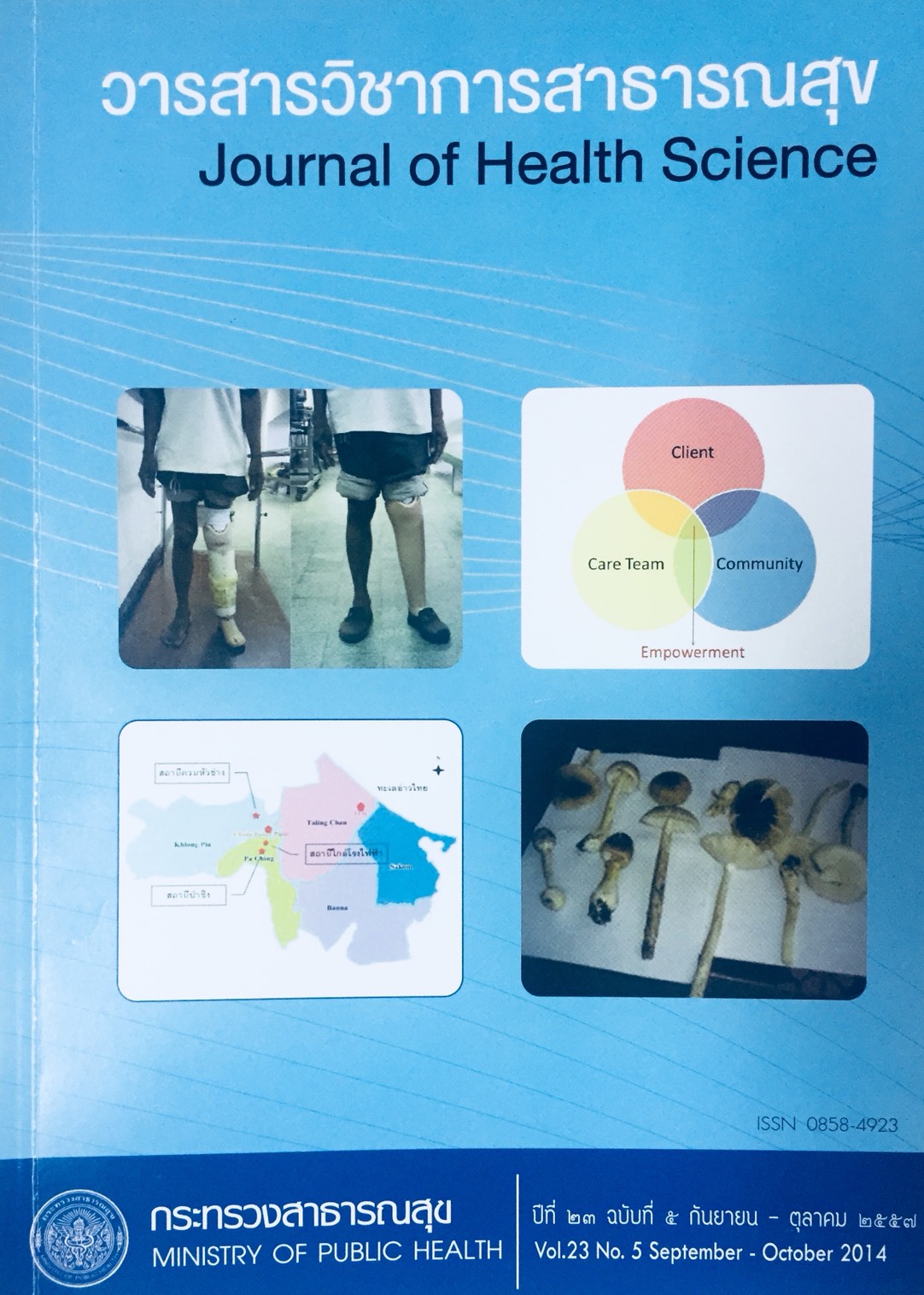Outcomes of ‘Direct Trocar Insertion’ laparoscopic cholecystectomy in comparison with ‘Veress Needle Insertion’ and ‘Open Hasson’ laparoscopic cholecystectomy: a case study of Ban Phai Hospital, Khon Kaen Province
Keywords:
cholecystectomy, laparoscopic cholecystectomy, direct trochar insertion, gall stone, cholecystitis, cholelithiasisAbstract
At the present time, laparoscopic cholecystectomy (LC) has been regarded as the ‘gold standard’, and has superseded open cholecystectomy in treating patients with cholelithiasis and cholecystitis. Amongst various techniques used in recent years, direct trocar insertion technique (DTI) has become more popular in many countries. This study thus sought to determine the treatment outcomes of DTI in comparison to other LC techniques, namely, Veress needle insertion (VN) and Open Hasson (OH) through a case study of Ban Phai Hospital, Khon Kaen Province. The study employed crosssectional design using secondary data of patients undertaking LC between January 2008 and September 2013. Demographic data, clinical profiles, treatment modalities and treatment outcomes were analysed by descriptive statistics in terms of percentages and median value, and by inferential statistics through multiple logistic regression with marginal effect and multiple linear regression. The findings revealed that DTI did not have significant differences in terms of clinical complications, operating time, conversion and admission days, in comparison with other LC techniques (VN and OH). Therefore, DTI was considered another safe LC technique, which produced similar clinical outcomes to other LC techniques. This study also suggested potential risk factors that might lead to adverse clinical outcomes from LC treatment. This finding might benefit health staff for better preparing and planning appropriate treatments for patients with those risk factors.
Downloads
Downloads
Published
How to Cite
Issue
Section
License
Copyright (c) 2017 Journal of Health Science- วารสารวิชาการสาธารณสุข

This work is licensed under a Creative Commons Attribution-NonCommercial-NoDerivatives 4.0 International License.







